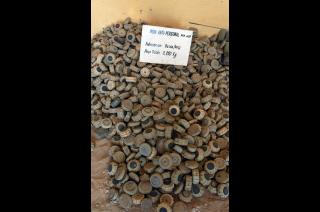A mine-free world
Creating a world free from deadly weapons is an important objective for the United Nations. It works with governments, civil society groups and arms manufacturers to control, reduce, abolish or destroy weapons ranging from nuclear arms to so-called conventional weapons, such as machine guns.
One example of progress is the 1997 Mine Ban Treaty. Signed by over 160 countries, the Treaty has brought about a dramatic reduction in the use of landmines. The number of people killed or injured by mines has plummeted, from around 20,000 when the Treaty was agreed to fewer than 4,000 today.
But there is still a long way to go. Some 10 people every day are killed or maimed by mines. Mines are still present in over 60 countries, threatening the lives of millions of people and preventing the land they contaminate from being used, for example, for housing or farming.
The picture above shows a stockpile of mines displayed in the Tindouf Military Musem in Algeria (UN Photo / Evan Schneider).
For this reason, the UN declared in 2005 that 4 April should be observed as the International Day for Mine Awareness and Assistance in Mine Action. The Day serves to:
- raise awareness of the ongoing threat posed by mines
- call on states that have not yet signed the Mine Ban Treaty to do so
- mobilise support to help countries affected by mines to clear and destroy them
What are landmines?
Landmines are classified as 'conventional weapons'. They are small explosive devices, often hidden under or on the ground. They are designed to detonate once people, animals or moving objects come into contact with them.
- Anti-personnel mines are intended for use against humans - they are usually detonated when someone steps on them.
- Anti-tank mines are designed to immobilise or destroy vehicles. They are usually larger than anti-personnel mines and require more pressure to detonate.
Landmines have been used extensively in armed conflicts. Traditional military uses for mines include protecting strategic locations such as borders, as well as attacking opponents. However, they have also been used to target civilians and to terrorise local communities.
Landmines can wreak damage without the need for humans to detonate them. They can stay in the ground, undetonated, long after hostilities have ceased. They can prevent people from accessing their homes and can limit their movements. Often, their location is unknown. If they are dropped by planes, they can scatter over a wide area.
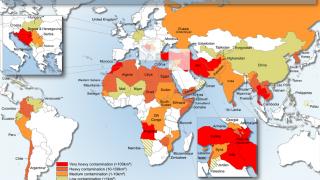
Who is affected?
Landmines are easy to produce, use and hide. There is no definite figure for how many mines there are worldwide, however, the UN estimates that they are present in 60 countries. In the last decade, the countries with the highest number of mine victims were Afghanistan, Cambodia and Colombia. All have experienced prolonged armed conflict.
According to the Landmine & Cluster Munition Monitor, a civil society initiative that provides independent monitoring, anti-personnel mines were used in 11 countries in 2013: Afghanistan, Colombia, Myanmar, Pakistan, South Sudan, Sudan, Syria, Thailand, Tunisia, Turkey and Yemen. In most of these countries, non-state armed groups were reported as laying mines. However, use by government forces was reported in Myanmar and Syria, which have not ratified the Mine Ban Treaty, and in South Sudan, Sudan and Yemen, which have.
While mines are laid by armies or armed groups, it is civilians who make up the vast majority of casualties. In 2012, the Landmine Monitor recorded 3,628 deaths due to mines, cluster bombs and other explosive devices. 78% of were civilians and almost half of these casualties were children.
Children are particularly vulnerable to landmines. They are often too small to see them or unable to read warning signs. Brightly coloured, oddly-shaped and easy to pick up, mines can be seen as toys. In heavily mined areas, such as northern Iraq, children have been found using mines as wheels for toy trucks. In Cambodia and Afghanistan, they have developed games involving detonations.
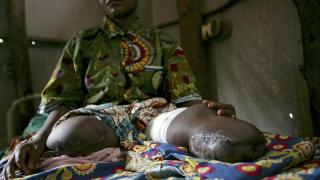
The UN and mine action
The 1997 Mine Ban Treaty introduced a complete ban on anti-personnel landmines. The Treaty was established following negotiations led by the UN, governments from around the world, organisations such as the International Committee of the Red Cross and – crucially – over 1,4000 non-governmental organisations belonging to the International Campaign to Ban Landmines (ICBL).
ICBL started campaigning for a ban in the early 1990s and created a powerful movement that succeeded in building public awareness of the impact of mines and global support for an outright ban. This effort was recognised in 1997 when the ICLB and its coordinator, Jody Williams, won the Nobel Peace Prize.
Once a country signs up to the Treaty it agrees not to use, develop, produce, stockpile, or transfer antipersonnel landmines, or to assist another country in such activities. It also commits to destroy all stockpiled antipersonnel landmines within four years of ratifying the Treaty, and to clear all laid antipersonnel mines within 10 years.
As of October 2014, 162 countries had ratified the treaty. Oman is the most recent country to join the Treaty, having done so in August 2014. The UN oversees the treaty and countries that ratify the treaty must report to the UN Secretary-General about their efforts to implement the obligations under the treaty.
States that have not signed the Treaty include: China, Egypt, India, Iran, Libya, Morocco, Pakistan, Russia, Saudi Arabia and the United States. Click here for ICBL’s interactive map showing Treaty status, stockpiles and casualties around the world
The photo below shows members of the Bangladesh De-mining Company of the UN Mission in Sudan preparing to destroy the anti-personnel landmines in 2008, previously decommissioned by the Sudanese Peoples Liberation Army, in accordance with the provisions of the 1997 Mine Ban Treaty. (UN Photo / Tim McKulka)
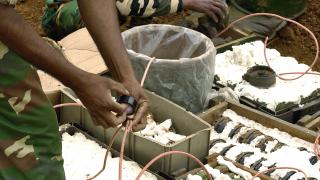
Impact of the Mine Ban Treaty
- As a result of the Mine Ban Treaty more than 47 million mines kept in stock by countries around the world have been destroyed.
- Before the treaty was introduced, more than 50 countries produced antipersonnel mines. As of 2013 this number had been reduced to 12 countries: China, Cuba, India, Iran, Myanmar, North Korea, Pakistan, Russia, Singapore, South Korea, the United States, and Vietnam.
- As of October 2013, 59 countries were still confirmed as affected by mines but mine clearance is progressing. 2012 saw the largest amount of land cleared of mines since the Treaty was established.
UN mine action
Mine clearance is an essential part of ensuring that communities affected by war can return to normal lives; for refugees to return to their homes; for children to walk safely to school and for farmers to grow their crops without risking their lives and limbs.
It is a painstaking process. It includes surveying an area, testing to determine the location of mines, the creation of maps and marking up of the location and then the clearance process itself.
While there have been technological advances in mine detection and destruction, due to cost and reliability, traditional methods remain the most prevalent:
- Manual clearance – people using metal detectors and long, thin ‘prodders’ to locate the mines, which are then destroyed by controlled explosion.
- Mine detection dogs – used in combination with manual ‘deminers’, the dogs are able to smell the presence of mines in the ground.
- Mechanical clearance – the use of machinery such as vegetation cutters, often attached to armoured bulldozers, to destroy the mines in the ground. These machines can only be used in certain terrains and are expensive to operate. They are often not 100% reliable so their work needs the be checked manually.
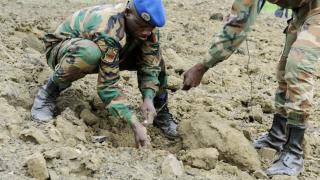
Photo: The UN Mine Action Service and UN peacekeeping operation in Côte d’Ivoire destroyed 2,175 landmines and explosive remnants of war in 2013 (UN Photo / Basile Zoma)
More than clearance
Mine action is about more than removing mines from the ground. It includes mine education to help people in understand the risks posed by these weapons. It includes providing assistance to victims, in terms of medical treatment, but also support to adapt, retrain or find a new job following injury. And it includes working with governments to implement the Mine Ban Treaty and the UN’s vision of a mine-free world.
The UN works on all of these areas. 14 UN bodies contribute to mine action programmes in 30 countries. These include:
- United Nations Mine Action Service, which is responsible for ensuring a coordinated UN response
- UN Department of Peacekeeping Operations, which integrates mine clearance into peacekeeping operations
- United Nations Children's Fund, which supports and delivers mine education
- World Health Organization, which works with governments on the provision of victim assistance

